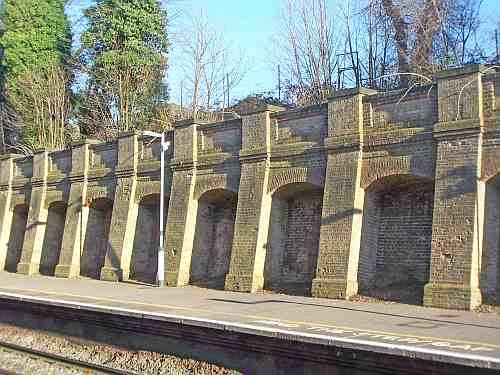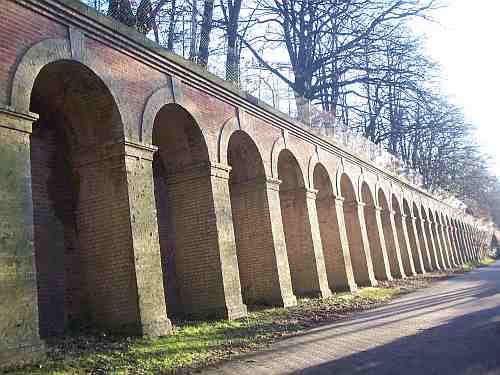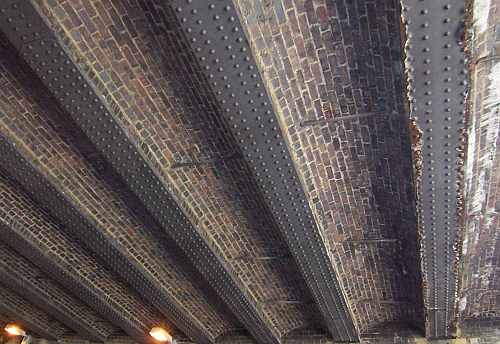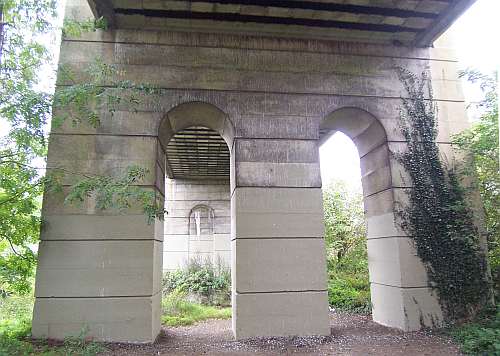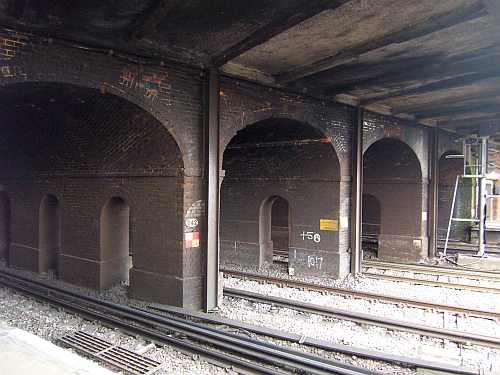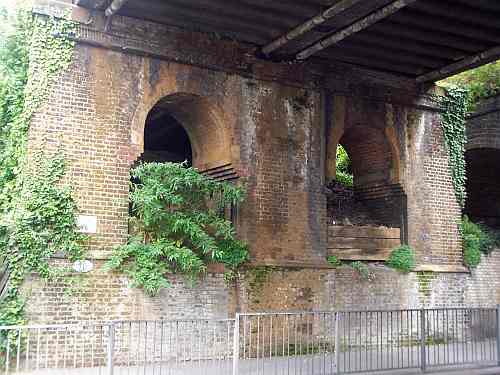Railway Structures
Other types of arch
Blind Arch
A blind arch is one, usually in an abutment, pier or retaining wall, that is closed off at the back. These are normally quite shallow and were used to reduce the weight of material. When the railways were built the cost of materials was higher relative to labour than is now the case. Therefore, it could be worthwhile taking longer to build a more complicated structure if fewer bricks were used, whereas speed of construction is usually a critical factor in the cost and practicability of modern structures. These blind arches are in retaining walls at North Dulwich (above left) and Exeter Central (above right).
This retaining wall in red and yellow brick, with elaborate blind arches, is at the former Crystal Palace High Level station. The railway was built on a ledge excavated from the side of Sydenham Hill, and the wall supports the higher land. Jack Arch: Bridge decks can be of jack arch construction. Jack arches span between parallel beams, being built off the lower flange.
This jack arch bridge is at Chatham and supports the station building. There are relieving arches in the brick pier.
These jack arches form part of Burden Lane bridge, Cheam. The older part of the bridge is a brick arch that dates from construction of the railway. This part was built in 1907, when the railway was widened.
Jack arches are usually brick off wrought iron or steel beams, but Southover Road bridge at Lewes has concrete jack arches. There are also concrete jack arches in the bridge supporting Sutton station building. Relieving Arch: A relieving arch serves the same purpose as a blind arch, but it is open.
Relieving arches are normally found in bridge piers, as illustrated by Hogsmill Viaduct on the Chessington branch (above left) and Bridge 242 at Tonbridge (above right).
The relieving arches in the piers of bridge 70, which carries the fast lines over Croham Road, South Croydon are unusual. The original arch rings have been strengthened by additional bricks corbelled out from the opening. |
All photographs are copyright
return to the Railway Structures menu
return to picture gallery page
This page was created 3 January 2010
